#25 July 1868
Explore tagged Tumblr posts
Text














The Wyoming Territory was established on July 25, 1868.
#Pilot Butte Wild Horse Scenic Loop#Rock Springs#Navigation by Joshua Wiener#Rawlins#WickBeumee Wildlife Habitat Management Area#Torrington#Lusk#Tree Rock#Sherman Pass#White Mountains#Rocky Mountains#Sherman Mountains#Wyoming Territory#established#25 July 1868#155th anniversary#US history#architecture#cityscape#original photography#vacation#tourist attraction#landmark#landscape#travel#countryside#USA#Wyoming#summer 2019
10 notes
·
View notes
Photo

George Armstrong Custer
George Armstrong Custer (l. 1839-1876) was an officer in the US Army, serving in the cavalry from 1861 to 1865 during the American Civil War and the wars against the Plains Indians 1866-1876. Although he became a widely recognized hero during the Civil War, he is best remembered for his death at the Battle of the Little Bighorn.
Custer established a reputation for recklessness, courage, and self-promotion early in the Civil War and, by 1863, after the Battle of Gettysburg, was a national hero. He blocked the retreat of General Robert E. Lee (l. 1807-1870) in April 1865 and was present at Appomattox Court House when Lee surrendered to General Ulysses S. Grant (l. 1822-1885). After the war, he oversaw Reconstruction in Texas before taking command of the newly formed 7th Cavalry in campaigns against the Native Americans of the West.
He led his troops against the Cheyenne people at the Washita Massacre/Battle of the Washita River in November 1868 and, ignoring the terms of the Treaty of Fort Laramie of 1868, marched his troops into the Black Hills in 1874 where he discovered gold. News of this discovery soon brought more settlers and miners into Sioux and Cheyenne territory, igniting the Great Sioux War of 1876-1877. At the Battle of the Little Bighorn (25-26 June 1876) Custer and his men were slaughtered by Arapaho, Cheyenne, and Sioux warriors under chief Sitting Bull (l. c. 1837-1890). Afterwards, thanks in large part to the efforts of his wife, Elizabeth Bacon "Libbie" Custer (l. 1842-1933), George Armstrong Custer came to be regarded as a great American hero.
His legacy and reputation held until shortly before the Second World War (1939-45) when scholars began challenging the traditional narrative. Today, Custer is a controversial figure, often condemned for his brutality and ruthlessness. Although Custer should certainly be held accountable for his actions, it must also be recognized that he was primarily advancing the genocidal policies of his government which saw the American Indian as an obstacle to progress, civilization, and Manifest Destiny.
Early Years & West Point
George Armstrong Custer was born on 5 December 1839 in New Rumley, Ohio, to Emanuel Henry Custer, a blacksmith, and his second wife, Marie Ward Kirkpatrick. He was named after a minister as his mother hoped this would encourage him to follow that path. He had three older half-siblings from his mother's first marriage and four full siblings, including Thomas and Boston, who would also join the military and die with him in battle.
He was sent to live with his older half-sister and her family in Monroe, Michigan, to attend school and met the girl who would one day become his wife, Elizabeth Clift Bacon. After graduating, he moved to Hopedale, Ohio, and enrolled at the Hopedale Normal College, pursuing a teaching degree. He began his teaching career in Cadiz, Ohio, in 1856 and boarded at the home of the Holland family, where he fell in love with the daughter, Mary Jane Holland. He hoped to marry her but found little opportunity for advancement in Ohio, so he decided to change careers and apply to West Point Military Academy. Scholar Nathaniel Philbrick comments:
He'd been a seventeen-year-old schoolteacher back in Ohio when he applied to his local congressman for an appointment to West Point. Since Custer was a Democrat and the congressman was a Republican, his chances seemed slim at best. However, Custer had fallen in love with a local girl, whose father, hoping to get Custer as far away from his daughter as possible, appears to have done everything he could to persuade the congressman to send the schoolteacher with a roving eye to West Point.
(47)
Custer entered West Point in July 1857 and, before the end of his first session, had earned 27 demerits. By graduation, he had been given more demerits than any of the other cadets in his class. After graduation in June 1861, he faced court martial for failing to break up a fight between cadets but was only reprimanded as the American Civil War was already underway. Many of Custer's classmates had left to fight for the Confederacy and the Union forces were in dire need of trained officers. Custer was commissioned a second lieutenant and sent to drill volunteers in Washington, D.C.
Continue reading...
33 notes
·
View notes
Text

Portrait Of Ludwig I, King Of Bavaria
Artist: Frederich August Kaulbach (German, 1850-1920)
Ludwig I or Louis I (25 August 1786 – 29 February 1868) was King of Bavaria from 1825 until the 1848 revolutions in the German states. When he was crown prince, he was involved in the Napoleonic Wars. As king, he encouraged Bavaria's industrialization, initiating the Ludwig Canal between the rivers Main and the Danube. In 1835, the first German railway was constructed in his domain, between the cities of Fürth and Nuremberg, with his Bavaria joining the Zollverein economic union in 1834. After the July Revolution of 1830 in France, Ludwig's previous liberal policy became increasingly repressive; in 1844, Ludwig was confronted during the Beer riots in Bavaria. During the revolutions of 1848 the king faced increasing protests and demonstrations by students and the middle classes. On 20 March 1848, he abdicated in favour of his eldest son, Maximilian.
#portrait#ludwig i#king of bavaria#german monarchy#man#people#draperies#indoor#black custome#sword#19th century germany#german painter#frederich august kaulbach
9 notes
·
View notes
Note
I’m back (after writing a 55 pg fic so far). I’m trying to wrap my head around Soji’s timeline and pouring over the timeline you have posted.
In September 1867 Soji becomes seriously ill - does he stay with the Shinsengumi still during that time I’m guessing?
January 1868 - I assume he went to Osaka for the battle of Toba-Fushimi but he doesn’t take part in it? He stays behind with Kondo who was shot in the shoulder?
February 4 - they sail to Edo, and I assume Soji is with them? And this is his first time on a ship?
Feb? ?? - Okita’s sister Mitsu and Okita Rintaro left (which I’m guessing they were in contact and it’s unknown how they parted)
February 28ish - This is when Soji goes to Matsumoto Ryojin’s clinic and is staying at Matsumoto’s house at Imado shrine.
March 24 - so a month later the Shinsengumi goes to Kofu Castle and stays in Hino which is still in Edo where I’m guessing Soji gets bad/feverish and can’t travel so this is actually where they officially leave him at Uekiya Heigoro’s house? In the “site of Okita Souji’s death” post you say it was the end of February when he moved there (which would be a month prior to this when he was going to Matsumoto’s clinic - so I just want to clarify that it was around the end of March that Okita moved to Heigoro’s house.
Sometime in March (before the 28th) - the Shinsengumi visits Soji and he smiles and doesn’t let them know how sick he is so they won’t worry.
March 28-April 25 - the shinsengumi are pretty much all around Edo until Kondo is beheaded in May and Hijikata gets injured at the Battle of Utsunomiya Castle - Where does Hijikata go?
July 19 - *sobs* we lose him. So he’s at the house alone and suffering from end of March to July? 4 months. And in those four months, he did visit Kondo’s wife Tsune and daughter Tama at Joganji Temple in Nakano (when was this?).
Let me know if I missed anything we know about Soji here as well!
Thank you so much and super grateful. I want to learn as much as I can and flesh out the timeline a bit so I can fully understand what he experienced and how he lived up until the end.
Hi @sayitcanonlybeme, sorry for the extremely late reply. I've gone back to grad school and have been busy with classes/projects for the past few months, so I haven't been able to be active on Tumblr until the holidays.
The timeline was posted a long time ago when I first started learning about the Shinsengumi, so there are inaccuracies, especially mixups between Lunar calendar and Western calendar dates.
Here are the events with details and corrections:
September 1867 Soji becomes seriously ill
It's not clear exactly when he became ill, but according to Japanese Wiki Corpus:
according to Kanefumi NISHIMURA's "Mibu Roshi Shimatsuki", he [Okita Souji] was seriously ill around September when the quarters were moved to Fudodo Village; and in a letter to Kondo dated October 13, Kojima wrote that he was worried about Okita's worsening condition. Given the above, when Okita's health condition worsened so critical that he could not bear fighting was from autumn to winter in 1867. It is also thought that his intense exercise might have been an added burden on his lungs and aggravated his illness.
I'm not sure whether the dates are Lunar or Western calendar, but September is October on the Western calendar. Here's a useful calendar converter.
January 1868 - I assume he went to Osaka for the battle of Toba-Fushimi
He was first staying at Kondo Isami’s mistress’s house in Rokujo, Kyoto, not far from Fushimi (according to this article and this article). Abe Juro arrived there on the morning of December 18 (Lunar calendar, Western calendar: January 12, 1868), hoping to assassinate Okita. He later mentioned in the "Shidankai Sokkiroku" (史談會速記錄), "However there was no one there but one woman, who after interrogation admitted that there was an Okita Souji the other night who at 10PM returned to Fushimi. It was really regrettable."
December 18 was also the day Kondo got shot in the right shoulder on his way from Nijo Castle (more info).
They were both sent to Osaka Castle to receive medical care, so neither of them participated in the fighting that started on January 3 (Lunar calendar, Western calendar: January 27).
February 4 - they sail to Edo
According to this article, Kondo, Hijikata, and Okita boarded the Shogunate's ship Fujisanmaru on January 10 (Lunar calendar, Western calendar: February 3).

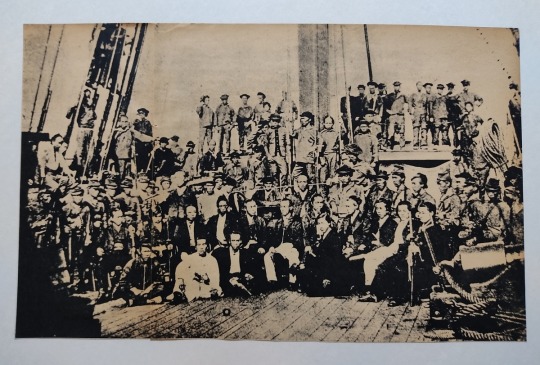
(image sources: [1] [2])
Nagakura boarded the Jundomaru which left a day earlier. Out of the 150 Shinsengumi members, 116 remained. They went back to Edo on those two ships along with the rest of the Shogunate army.
The Fujisanmaru arrived at Shinagawa, Edo on January 15. Kondo and Okita went to a medical clinic in Kanda Izumibashi (神田和泉橋) to receive treatment from Matsumoto Ryojun. The rest of the Shinsengumi stayed at a garrison in Kajibashi Gate (鍛冶橋門).
This is likely Okita's first time traveling on a ship since the Shinsengumi originally arrived in Kyoto on foot and there are no other records of Okita making long journeys.
Feb? ?? - Okita’s sister Mitsu and Okita Rintaro left
Okita Mitsu and Rintaro evacuated along with the Shinchogumi's sponsor, the Lord of the Shonai domain Sakai Tadazumi, to the Shonai domain in northern Japan (source).
Since Souji wasn't fit for travel, he was left behind in Edo. According to the Okita Family Records, they left him on February 26 (Lunar calendar, Western calendar: March 19, 1868). However, according to this article, Mitsu and Rintaro left in March (lunar calendar), so I'm not sure which date is more accurate.
According to the Shinsengumi's financial records, Okita withdrew money to pay a carpenter on February 26 (lunar) to repair Uekiya's house in Sendagaya where he spent his final days, so he had either just moved in or was about to move there when Mitsu left.
February 28ish - This is when Soji goes to Matsumoto Ryojin’s clinic
I think February 28ish (lunar) is when he left Matsumoto Ryojun's clinic.
According to this article:
In January of Keio 4, Matsumoto Ryojun was summoned by a certain Hiraoka, a young official of the shogunate, and receive news that "The wounded from the Battle of Toba-Fushimi were returning to Edo, and that they should be given temporary hospitalization at the residences of the lords". As if following in the footsteps of the Shogunate's army, news spread that Satsuma-Choshu army had moved eastward and was coming to Edo. Most of the wounded had already been cured, and more than 30 patients were treated at Imado. He built his own dormitory in a corner of the grounds of the shrine in Imado, where he lived, and built a hospital building in Shofukuji Temple, which was used as a field hospital, and moved his own patients there as well. The Shinsengumi, defeated in the Battle of Toba-Fushimi in Keio 4, returned to Edo aboard the Fujisanmaru and were transported from the Kamaya (釜屋, an inn/teahouse) in Shinagawa to a medical clinic in Okachimachi, Kanda Izumibashi, and then to a field hospital in Shofukuji, where Kondo Isami and Okita Souji were treated by Matsumoto Ryojun, but this is only speculation.
So it's not clear when they went to each location, but from that article, it sounds like Okita went to Matsumoto's clinic at Imado Shrine shortly after arriving in Edo.
March 24 - so a month later the Shinsengumi goes to Kofu Castle and stays in Hino
They went to Kofu on March 24 (Western calendar, Lunar calendar: March 1), so it makes sense that after Okita got too sick in Hino, he was left behind and eventually sent to Uekiya's house in Sendagaya.
He was probably either about to move in or already living in Uekiya's house before he left towards Kofu, since he took out money for renovations on February 26 (lunar).
Sometime in March (before the 28th) - the Shinsengumi visits Soji
Since Nagakura assumed Okita died at Imado in his diary, most Shinsengumi members probably didn't know that he was staying at Uekiya's house starting from March. They were probably trying to keep his location secret to keep him safe.
Since Kondo was captured soon after the Battle of Koshu-Katsunuma, it's unlikely that he ever visited Okita again.
Hijikata did go back to Edo for a short time after that battle, so it's possible that he could have visited Okita, but he was busy pleading Kondo's case and preparing for battle.
It's also possible that a few other trusted Shinsengumi members knew Okita's whereabouts and visited him. Since they didn't want to tell Okita about Kondo's death, it could mean that Okita was still in touch with some Shinsengumi members.
March 28-April 25 - the shinsengumi are pretty much all around Edo until Kondo is beheaded in May and Hijikata gets injured at the Battle of Utsunomiya Castle
At the Battle of Utsunomiya, Hijikata was shot in his right foot on April 23, so he was carried from the battlefield on Shimada Kai's back.
On April 29, Hijikata arrived near Aizu-Wakamatsu and stayed at Shimizuya Inn, which had hot springs, to recover from his wound.
He learned about Kondo's death while he was there and built a tombstone for him at the nearby Tenneiji temple.
On July 1, he left to visit his men.
A month later, he went back to the battlefield to fight the Battle of Aizu.
(source)
July 19 - *sobs* we lose him. So he’s at the house alone and suffering from end of March to July? 4 months. And in those four months, he did visit Kondo’s wife Tsune and daughter Tama at Joganji Temple in Nakano
He died on July 19 (Western calendar). He might have been lonely without his loved ones, but I don't think he was alone since Uekiya’s rice cooker was taking care of him and he probably saw other doctors after Matsumoto left.
He visited Kondo’s wife and daughter at Joganji Temple, but I don't think there would be any records where we could find the date since he was in hiding and trying to keep his movements secret.
According to the quote from this article from "Shinsengumi Imon" (新選組遺聞) by Shimozawa Kan:
Isami's family, his wife Tsune and his mother-in-law Keiko (瓊子), moved out of their house in Ushigome shortly after Isami left for Koshu and moved to the outskirts of Edo. They rented room at a temple called Joganji in Nomurahongo.
In the Shinsengumi's financial records, there's a withdrawal on February 28 (lunar) for the house in Ushigome where Kondo’s wife and child lived, which might be related to the move.
So Okita probably visited them in Joganji some time between March and July.
This article (from the "Joganji Records" (成願寺誌)) describes what his final days were like:
Edo was already crawling with government troops with Imperial Brocades, but Uekiya, where Souji was staying, was a safe haven in Ikejiribashi, a very lonely place at the time, where the sound of watermills over the river echoed and there was hardly anyone to be seen at night. Although safe, it must have been too lonely for the young Souji. Sometimes he would go by palanquin to Joganji temple, about a ri away [a 1 hour walk]. He would stay there for days and days. He had an incurable disease, and he probably knew better than anyone else that his death was approaching. Unable to endure the loneliness and desolation, he would come to the temple and soak in the warmth of the unchanging affection of the mother and child, and how comforted he was by that.
Let me know if there's anything I didn't cover or if you have any more questions.
I would really like to read the fic you wrote, if you don't mind sharing it - nvm, found it :)
29 notes
·
View notes
Text

Amalie Von Levetzow
Artist: Johann Friedrich August Tischbein (German, 1750-1812)
Date: 1803
Medium: Oil on Canvas
Collection: The Goethe House, Frankfurt, Germany
Amalie Von Levetzow
Amalie Theodore Caroline von Levetzow (née von Brösigke; 1788 - 1868) was a German noblewoman.
In 1803 she married Joachim Otto Ulrich von Levetzow (25 March 1777 - 28 January 1843). Earlier that year she was painted by Johann Friedrich August Tischbein. She and Joachim had two daughters, Ulrike and Amalia (or Amélie), but then the couple divorced. She then married his cousin Friedrich Carl Ulrich von Levetzow, who was killed at the Battle of Waterloo. She and Friedrich had one child, Bertha.
In 1821, 1822 and 1823 she and her children stayed at Marienbad, where she met daily with the 72-year-old Johann Wolfgang von Goethe. They became friends and he fell in love with Ulrike, then only seventeen. He sent her a marriage proposal via Amalie, having not mentioned it before to her or Ulrike. Karl August, Grand Duke of Saxe-Weimar-Eisenach met with Ulrike's mother to speak in Goethe's favour and - though she felt she could not refuse the Grand Duke - she stated any final decision must rest with Ulrike. She never mentioned the proposal to Ulrike, who never married. Goethe wrote of the situation in his Marienbad Elegy.
Amalie married a third time in 1843 to Franz Josef von Klebelsberg-Thumburg zu Třiblitz (24 July 1774 - 28 December 1857), President of the Hofkammer of the Austrian Empire and a count in the Bohemian nobility. After his death she inherited his estate at Třiblitz - she died there and left it to Ulrike.
#portrait#woman#bird#architecture#costume#garden#mountains#german#noblewoman#johann friedrich august tischbein#european culture#german artist#oil on canvas#19th century
4 notes
·
View notes
Text
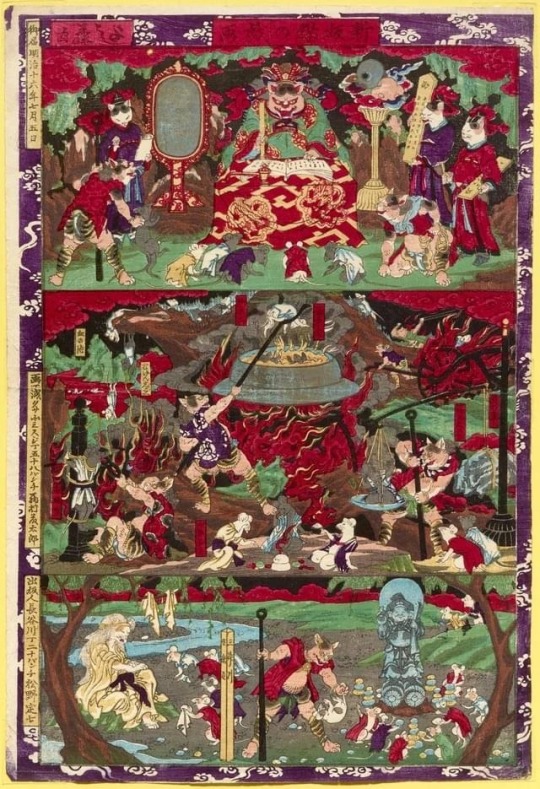
Utagawa Yoshifuji - Newly Published Comic Picture of Cats (Shinpan neko no giga) (1883) :: Japan :: Meiji era (1868-1912), 1883 (Meiji 16), July 5 Woodblock print (nishiki-e); ink and color on paper:: H. 145/8 x W. 913/16 in. (37.2 x 25 cm)
Susan L. and C. J. Peters
In this depiction of judgment, punishment, and salvation, Utagawa Yoshifuji casts mice as the judged and condemned and cats in the role of judges, torturers, and Datsueba (the Hag of Hell). Only one figure appears in human form, the blue savior at the lower right. Normally this individual would be Jizo (the bodhisattva Kshitigarbha), but in this satirical print he is Daitokuten, a folk god of good fortune and prosperity, who had a cult following during this period. The cats punish the mice in the same ways that humans are punished in Buddhist hell paintings, including being dunked into boiling cauldrons or blood pools.]
[Guillaume Gris]
* * * *
THREE A.M.
The god of three a.m. is the god of the dripping faucet, sirens, and barking dogs. He’s been given titular charge of circumstances that cannot be controlled. “It’s out of my hands,” he says, repeatedly. He is a minor functionary, a troll that lives under a bridge. On the far side are the pastures of night where bright stars graze in the dark matter of the cosmos. He is fond of philosophic thought. “Of course, our understanding is limited. All we can do is adhere to those laws and principles that have been proven, time and again, to work.” It seems there is some discrepancy in my papers. “A minor delay,” he assures me. Now it’s almost four.
LOUIS JENKINS
[alive on all channels]
#catoriess#Utagawa Yoshifuji#Japanese art#stories#Buddhist#Guillaume Gris#poem#poetry#Three A.M.#Louis Jenkins#alive on all channels
10 notes
·
View notes
Text


On 17th May 1741 George Watson's Hospital School was opened in Edinburgh with 11 pupils.
The school was established according to the instructions of George Watson who bequeathed the bulk of his fortune of £12,000 - a vast sum in 1723 — to found a hospital school for the provision of post-primary boarding education to the "children and grandchildren of decayed Merchants of Edinburgh, and of the Ministers of the Old Church thereof". He further expressed a preference for those by the surname of Davidson or Watson.
Watson was never a member of the Merchant Company of Edinburgh, but he was impressed by their running of the Merchant Maiden Hospital and so he chose them to implement the terms of his will. After some years, the Governors finally bought land known as Heriot's Croft, located off Lauriston Place in Edinburgh, close to the Meadows and opposite George Heriot's School. The foundation stone was laid on 22 May 1738, and the building was completed early in 1741.
At the time, there was concern that this site was too far from the city a point I explain to many visitors I have shown around Edinburgh to show how small the city once was.
In accordance with Watson's will, the Governors were responsible for former pupils up to the age of 25; they were helped to find apprenticeships and paid an allowance.
Watson's stated preference was for allowing the Hospital's charges to become skilled workers, though the Governors also allowed boys who showed an ability to pursue medicine or academia
By the 1860s, the hospital school system had fallen into general public disrepute, while the Merchant Company was fearful both of government intervention in the schooling system and of its own decline. The solution was to re-found Watson's, and the three other hospitals under its governorship, as day schools. In July 1868 the Company applied to Parliament for powers to reorganise their schools and make different use of their endowments to as to make education more widely available.
"Watsons was thus completely transformed, reopening on 26 September 1870 as a fee-paying day school with a roll of 800 boys, initially called George Watson's College Schools for Boys"'.
More change was to come quickly. In 1869, the original Hospital building was sold to the Edinburgh Royal Infirmary. When the infirmary sought to expand in 1871, the school moved a short distance west to the former Merchant Maiden Hospital building in Archibald Place. The original Hospital building was incorporated into the infirmary, and the chapel remained in use as the hospital chapel until the infirmary was itself moved away. The remains of the building were demolished in 2004 during the redevelopment of the infirmary site by the Quartermile consortium, which also redeveloped the site of the Archibald Place buildings, which had in turn been demolished in the 1930s after the school moved to its present site in Colinton.
Sport has always played a major part of the school, Watsonians FP RFC is affiliated to it, the FP stands for former pupils and one pf our all time great players, Gavin Hastings was educated at Watsons and played for the rugby team.
The pics show the old building at Archibald Place and the current building at Colinton.
8 notes
·
View notes
Text
Kyoto
July 4, 2023
Kyoto was the capital of Japan for more than 1,000 years - from 794 to 1868. It was not bombed during WWII mainly because it was had no industrial complex so what we are seeing are - for the most part - original. It's famous for its numerous classical Buddhist temples - (the largest complex of Buddhist temples is here) as well as gardens, imperial palaces, Shinto shrines and traditional wooden houses. It’s also known for formal traditions such as kaiseki dining, consisting of multiple courses of precise dishes, and geisha, female entertainers often found in the Gion district.
We experienced it all!
It is another HOT and muggy day with temps in the high 90s. We started our day early trying to beat the crowds and the heat and went to Fushimi Inari Shrine. Mark and I visited here in 2017 but it was remarkable no matter how many times you see it. The Torii Gate is a process of identifying a holy spot where the kami can reside inside in comfort. Families/or a single person can erect an Torii Gate anywhere making an area holy.
The Fushimi Inari Shrine is holy to the nth degree with more than 1,000 Torii Gates ranging from huge to tiny.
Torii gates represent the border between the secular world and the sacred worlds of the Shinto belief. The gates act as a passageway into a shrine's sacred space. It is not uncommon for a shrine to have more than one Torii gate. It can be described as a fusion of Shinto and Buddhism which once had a significant influence around Japan. In Buddhism, red is regarded as a color which represents the sacred atmosphere as well as vital force. As a result, ancient people started to paint torii gates standing at shinto shrines with red. Also the red color is believed to ward off the evil spirits and red color is used often for Inari Shrine, which enshrines the deity of harvest.
This place is a sight to see.

Before you entire the main area of the Shinto Shrine (or the Buddhist Temple or a mosque) you must purify yourself. In this case, first by cleansing your hand, then bringing water to your mouth with your hand, rinsing your mouth, spitting the water in the trough and then re-washing your hands.

At this Shrine the fox is the protector.
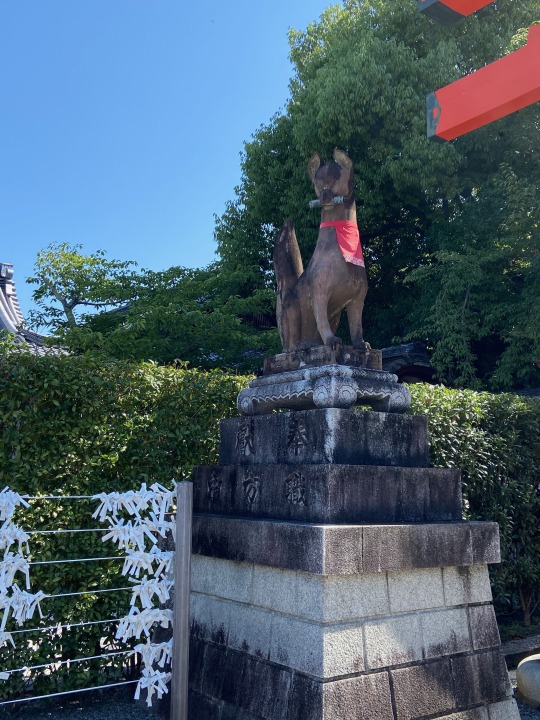
The white papers tied to the lines at the bottom left are baaaaaad fortunes that people have received. By hanging them on this place they will not come true. I asked Ken to give me an example - thinking surely they couldn't be too bad -BUT the example he gave me was "you are going to be a car accident." I guess that is not as bad as "you have a horrible disease and will be dead in a week" - but maybe there are fortunes like that and if there are I'm sure they are hanging on the outside of the shrine.

The size of the Torii gates change as you go higher up the hill.

The backside of the gates have the name of the family, person, company, etc that paid to have it built. These gates do not last forever and as they age - they are replaced by a new gate. There is a long waiting list of "replacers". The cost, the size and the location are related.

As you get further into the "tunnel" there are breaks where there are personal shrines and/or where you can buy a fortune. It is very interesting.


The is a beautiful path that goes up the mountain - but we didn't have enough time to complete it. With "25 minutes to the top" sign and 40 minutes until we had to return to the group - I turned back. Anson continued but eventually also turned back. But not before he saw this...

The woods were lovely and in almost every location I saw a believer clapping twice before a shrine and then bending in prayer.
There at two types of Torii Gates and we have seen both. The Torii Gates at the Fushimi Inari Shrine - where we were today have a curvy top. The Torii Gates at the Ise Grand Shrine are flat. I actually read the Japanese word for each Torii gate - but really - what is the point- I can barely remember the English word... Obviously not all are painted red - (although my eyes keep seeing orange.)


From there we were went to lunch in the Nishiki Market.


This was a lunch on your own thing - but OAT supplied us with some money. There were lots of options - but the one option Mark and Jay were searching for was an option with tables and chairs. We found a couple of places and settled on one that offered dumplings and fried chicken. Anson continued to search but eventually returned to our location and as he looked at the menu he discovered that Carol had not actually ordered "chicken" but "chicken skins." Carol eyes got huge and she tried to put a stop to it - but to no avail. I wish I had taken a picture - I felt bad for her, but it ended up not so bad. The dumplings and chicken skins arrived and Jay had the skins and Carol had the dumplings. The skins were crispy and atop a salad and they looked good to me - but they were battered with gluten filled deliciousness. Anson had 2 kinds of dumplings; gyoza and Kyoto pork dumplings. No pics here but delicious!! This place was perfect because it was now raining and this market was covered. Sweet!
Next up the Golden Pavilion - another UNESCO World Heritage Site. Originally built in 1397 this was one of those things that is NOT original and has been rebuilt many times. The one you see behind Anson and I was built in 1957 after a monk suffering from mental illness burned it to the ground in a suicide attempt. It was re-built using the plans of the 1397 structure.

This place is simply spectacular!! BUT the temps were closing in on 100 degrees and there were lots of people so finding your zen there was tough. I will say if ZEN was to be found - it was there though. The gardens are just fabulous.


What follows is from the website: " The site of Kinkaku-ji was originally a villa called Kitayama-dai (北山第), belonging to a powerful statesman, Saionji Kintsune. Kinkaku-ji's history dates to 1397, when the villa was purchased from the Saionji family by shōgun Ashikaga Yoshimitsu and transformed into the Kinkaku-ji complex. When Yoshimitsu died the building was converted into a Zen temple by his son, according to his wishes. Don't worry - there will NOT be a test!

The outside of the pavilion is gold leaf and we saw pictures of it in all four seasons and at all times of the day and night and it is just stunning.

In the evening, Mark, Anson, Jay and Carol and I opted to attend a performance at Gion Corner. Gion is the center of Geisha - FYI. Photos are forbidden here BUT you can get a great look at what we saw by visiting their website. You can switch it from Japanese to English in the upper right hand corner.
I lifted this from that website: "At the Gion Kobu Kaburenjo Small Theater, you can digest traditional culture and traditional performing arts that Japan boasts to the world, including Kyoto dance by maiko, Kyogen, bugaku, tea ceremony, flower arrangement, koto music, bunraku, and/or noh , in about an hour."
It was a great little smorgasbord of Japanese culture - I think it may have been better to say a great little "kaiseki" of Japanese culture - but i figured most people wouldn't understand what I was talking about - so I'm sticking with the big buffet!
The night we saw the performance they did Bunraku but not Noh. Frankly I was happy about that because we saw Noh theater the last time we were here. Anson remembered that I took all the grandkids to the DIA to see a Bunraku puppet show a few years back - but it was fun to see it in Japan. The key to enjoying a performance in a language you do not understand is to read the synopsis in the brochure before you see the show. It is the case that performance art often translates in any language. Our favorite was the Kyogen comedy and the least favorite was the Bugaku dance. We followed the storyline of the dance but the music was not pleasant to our American ears and the discord was such that we couldn't tell if it was meant to be or just an error made by musicians. We did all agree that the costumes were amazing thought. Anson suggested that we find a YouTube of a different Bugaku performance and see if the music is similar. We will do that. We also recognized the "dance by Maiko" as the same dance we had seen the night before when the adorable Maiko was performing just for us.
After the show we went to the Kyoto train station - which is WAY more that a train station.


We opted - much to Anson's dismay- to go to an Italian restaurant. Carol and Jay are not loving Japanese food the way Anson, Mark and I are. But even the Italian restaurant had a Japanese flare. The two major differences were that for the first time there was silverware on the table and large paper napkins. The silverware on the table looked strange and I am quite comfortable with chopsticks BUT I wanted the kiss those silly napkins. It turns out that I just am more comfortable with a napkin in my lap. The "napkins" we have had are small wet wipes and while I appreciate them for cleaning my hands both before and after the meal - I don't love wiping my mouth with them. Anyway - Carol and Jay had a pizza and Anson and Mark has some kind of hamburger dish and I had both Mark's and Anson's appetizers: escargot in garlic and butter, and mushrooms in garlic and butter and a glass of wine. What was not to love!!!

On our way home we opted to hang out at the Kyoto station and listen to live piano music tied into this light show. Anson told us that Papa Steve does the same kind of things in his studio.
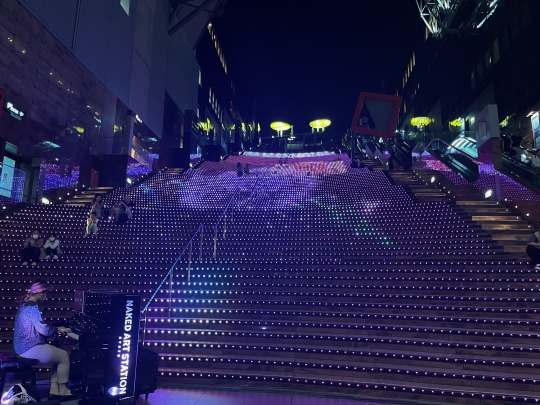

The temperatures were delightful and the night was young - sadly we are not - but we enjoyed the show. As we walked back to our hotel we saw realized the Kyoto tower was right there!

Funny story - Mark and I decided to do a selfie in front of the tower and Mark took one pic - then he said - Man, I just took one pic and I always take a bunch. I said - it will be fine. it wasn't....
It was another beautiful night in Japan.
Stay tuned.
2 notes
·
View notes
Text
June 17, 1854
The Republican Party is officially founded as an abolitionist party to slavery in the United States.
October 13, 1858
During the Lincoln-Douglas debates, U.S. Senator Stephen Douglas (D-IL) said, “If you desire negro citizenship, if you desire to allow them to come into the State and settle with the white man, if you desire them to vote on an equality with yourselves, and to make them eligible to office, to serve on juries, and to adjudge your rights, then support Mr. Lincoln and the Black Republican party, who are in favor of the citizenship of the negro. For one, I am opposed to negro citizenship in any and every form. I believe this Government was made on the white basis. I believe it was made by white men for the benefit of white men and their posterity for ever, and I am in favor of confining citizenship to white men, men of European birth and descent, instead of conferring it upon negroes, Indians, and other inferior races.”. Douglas became the Democrat Party’s 1860 presidential nominee.
April 16, 1862
President Lincoln signed the bill abolishing slavery in the District of Columbia. In Congress, almost every Republican voted for yes and most Democrats voted no.
July 17, 1862
Over unanimous Democrat opposition, the Republican Congress passed The Confiscation Act stating that slaves of the Confederacy “shall be forever free”.
April 8, 1864
The 13th Amendment banning slavery passed the U.S. Senate with 100% Republican support, 63% Democrat opposition.
January 31, 1865
The 13th Amendment banning slavery passed the U.S. House with unanimous Republican support and intense Democrat opposition.November 22, 1865
Republicans denounced the Democrat legislature of Mississippi for enacting the “black codes” which institutionalized racial discrimination.
February 5, 1866
U.S. Rep. Thaddeus Stevens (R-PA) introduced legislation (successfully opposed by Democrat President Andrew Johnson) to implement “40 acres and a mule” relief by distributing land to former slaves.
March 27, 1866
Democrat President Andrew Johnson vetoes of law granting voting rights to blacks.
May 10, 1866
The U.S. House passed the Republicans’ 14th Amendment guaranteeing due process and equal protection of the laws to all citizens. 100% of Democrats vote no.
June 8, 1866
The U.S. Senate passed the Republicans’ 14th Amendment guaranteeing due process and equal protection of the law to all citizens. 94% of Republicans vote yes and 100% of Democrats vote no.
March 27, 1866
Democrat President Andrew Johnson vetoes of law granting voting rights to blacks in the District of Columbia.
July 16, 1866
The Republican Congress overrode Democrat President Andrew Johnson’s veto of legislation protecting the voting rights of blacks.
March 30, 1868
Republicans begin the impeachment trial of Democrat President Andrew Johnson who declared, “This is a country for white men, and by God, as long as I am President, it shall be a government of white men.”September 12, 1868
Civil rights activist Tunis Campbell and 24 other blacks in the Georgia Senate (all Republicans) were expelled by the Democrat majority and would later be reinstated by the Republican Congress.
October 7, 1868
Republicans denounced Democrat Party’s national campaign theme: “This is a white man’s country: Let white men rule.”
October 22, 1868
While campaigning for re-election, Republican U.S. Rep. James Hinds (R-AR) was assassinated by Democrat terrorists who organized as the Ku Klux Klan. Hinds was the first sitting congressman to be murdered while in office.
December 10, 1869
Republican Gov. John Campbell of the Wyoming Territory signed the FIRST-in-nation law granting women the right to vote and hold public office.
February 3, 1870
After passing the House with 98% Republican support and 97% Democrat opposition, Republicans’ 15th Amendment was ratified, granting the vote to ALL Americans regardless of race.
February 25, 1870
Hiram Rhodes Revels (R-MS) becomes the first black to be seated in the United States Senate.
May 31, 1870
President U.S. Grant signed the Republicans’ Enforcement Act providing stiff penalties for depriving any American’s civil rights.
June 22, 1870
Ohio Rep. Williams Lawrence created the U.S. Department of Justice to safeguard the civil rights of blacks against Democrats in the South.
September 6, 1870
Women voted in Wyoming in first election after women’s suffrage signed into law by Republican Gov. John Campbell.
February 1, 1871
Rep. Jefferson Franklin Long (R-GA) became the first black to speak on the floor of the U.S. House of Representatives.
February 28, 1871
The Republican Congress passed the Civil Rights Act of 1871 providing federal protection for black voters.
April 20, 1871
The Republican Congress enacted the Ku Klux Klan Act, outlawing Democrat Party-affiliated terrorist groups which oppressed blacks and all those who supported them.
October 10, 1871
Following warnings by Philadelphia Democrats against black voting, Republican civil rights activist Octavius Catto was murdered by a Democrat Party operative. His military funeral was attended by thousands.
October 18, 1871
After violence against Republicans in South Carolina, President Ulysses Grant deployed U.S. troops to combat Democrat Ku Klux Klan terrorists.
November 18, 1872
Susan B. Anthony was arrested for voting after boasting to Elizabeth Cady Stanton that she voted for “Well, I have gone and done it — positively voted the straight Republican ticket.”January 17, 1874
Armed Democrats seized the Texas state government, ending Republican efforts to racially integrate.
September 14, 1874
Democrat white supremacists seized the Louisiana statehouse in attempt to overthrow the racially-integrated administration of Republican Governor William Kellogg. Twenty-seven were killed.
March 1, 1875
The Civil Rights Act of 1875, guaranteeing access to public accommodations without regard to race, was signed by Republican President U.S. Grant and passed with 92% Republican support over 100% Democrat opposition.
January 10, 1878
U.S. Senator Aaron Sargent (R-CA) introduced the Susan B. Anthony amendment for women’s suffrage. The Democrat-controlled Senate defeated it four times before the election of a Republican House and Senate that guaranteed its approval in 1919.
February 8, 1894
The Democrat Congress and Democrat President Grover Cleveland joined to repeal the Republicans’ Enforcement Act which had enabled blacks to vote.
January 15, 1901
Republican Booker T. Washington protested the Alabama Democrat Party’s refusal to permit voting by blacks.
May 29, 1902
Virginia Democrats implemented a new state constitution condemned by Republicans as illegal, reducing black voter registration by almost 90%.
February 12, 1909
On the 100th anniversary of Abraham Lincoln’s birth, black Republicans and women’s suffragists Ida Wells and Mary Terrell co-founded the National Association for the Advancement of Colored People.
May 21, 1919
The Republican House passed a constitutional amendment granting women the vote with 85% of Republicans and only 54% of Democrats in favor. In the Senate 80% of Republicans voted yes and almost half of Democrats voted no.
August 18, 1920
The Republican-authored 19th Amendment giving women the right to vote became part of the Constitution. Twenty-six of the 36 states needed to ratify had Republican-controlled legislatures.
January 26, 1922
The House passed a bill authored by U.S. Rep. Leonidas Dyer (R-MO) making lynching a federal crime. Senate Democrats blocked it by filibuster.
June 2, 1924
Republican President Calvin Coolidge signed a bill passed by the Republican Congress granting U.S. citizenship to all Native Americans.
October 3, 1924
Republicans denounced three-time Democrat presidential nominee William Jennings Bryan for defending the Ku Klux Klan at the 1924 Democratic National Convention.
June 12, 1929
First Lady Lou Hoover invited the wife of black Rep. Oscar De Priest (R-IL) to tea at the White House, sparking protests by Democrats across the country.
August 17, 1937
Republicans organized opposition to former Ku Klux Klansman and Democrat U.S. Senator Hugo Black who was later appointed to the U.S. Supreme Court by FDR. Black’s Klan background was hidden until after confirmation.
June 24, 1940
The Republican Party platform called for the integration of the Armed Forces. For the balance of his terms in office, President Franklin Delano Roosevelt (D) refused to order it.
August 8, 1945
Republicans condemned Harry Truman’s surprise use of the atomic bomb in Japan. It began two days after the Hiroshima bombing when former Republican President Herbert Hoover wrote that “The use of the atomic bomb, with its indiscriminate killing of women and children, revolts my soul.”
May 17, 1954
Earl Warren, California’s three-term Republican Governor and 1948 Republican vice presidential nominee, was nominated to be Chief Justice delivered the landmark decision “Brown v. Board of Education”.
November 25, 1955
Republican President Dwight D. Eisenhower’s administration banned racial segregation of interstate bus travel.
March 12, 1956
Ninety-seven Democrats in Congress condemned the Supreme Court’s “Brown v. Board of Education” decision and pledged (Southern Manifesto) to continue segregation.
June 5, 1956
Republican federal judge Frank Johnson ruled in favor of the Rosa Parks decision striking down the “blacks in the back of the bus” law.
November 6, 1956
African-American civil rights leaders Martin Luther King and Ralph Abernathy voted for Republican Dwight Eisenhower for President.
September 9, 1957
President Eisenhower signed the Republican Party’s 1957 Civil Rights Act.
September 24, 1957
Sparking criticism from Democrats such as Senators John Kennedy and Lyndon Johnson, President Eisenhower deployed the 82nd Airborne Division to Little Rock, AR to force Democrat Governor Orval Faubus to integrate their public schools.
May 6, 1960
President Eisenhower signed the Republicans’ Civil Rights Act of 1960, overcoming a 125-hour, ’round-the-clock filibuster by 18 Senate Democrats.
May 2, 1963
Republicans condemned Bull Connor, the Democrat “Commissioner of Public Safety” in Birmingham, AL for arresting over 2,000 black schoolchildren marching for their civil rights.
September 29, 1963
Gov. George Wallace (D-AL) defied an order by U.S. District Judge Frank Johnson (appointed by President Dwight Eisenhower) to integrate Tuskegee High School.
June 9, 1964
Republicans condemned the 14-hour filibuster against the 1964 Civil Rights Act by U.S. Senator and former Ku Klux Klansman Robert Byrd (D-WV), who served in the Senate until his death in 2010.
June 10, 1964
Senate Minority Leader Everett Dirksen (R-IL) criticized the Democrat filibuster against 1964 Civil Rights Act and called on Democrats to stop opposing racial equality. The Civil Rights Act of 1964 was introduced and approved by a majority of Republicans in the Senate. The Act was opposed by most southern Democrat senators, several of whom were proud segregationists — one of them being Al Gore Sr. (D). President Lyndon B. Johnson relied on Illinois Senator Everett Dirksen, the Republican leader from Illinois, to get the Act passed.
August 4, 1965
Senate Leader Everett Dirksen (R-IL) overcame Democrat attempts to block 1965 Voting Rights Act. Ninety-four percent of Republicans voted for the landmark civil rights legislation while 27% of Democrats opposed. The Voting Rights Act of 1965, abolishing literacy tests and other measures devised by Democrats to prevent blacks from voting, was signed into law. A higher percentage of Republicans voted in favor.
February 19, 1976
President Gerald Ford formally rescinded President Franklin D. Roosevelt’s notorious Executive Order 9066 authorizing the internment of over 120,000 Japanese-Americans during WWII.
September 15, 1981
President Ronald Reagan established the White House Initiative on Historically Black Colleges and Universities to increase black participation in federal education programs.
June 29, 1982
President Ronald Reagan signed a 25-year extension of the 1965 Voting Rights Act.
August 10, 1988
President Ronald Reagan signed the Civil Liberties Act of 1988, compensating Japanese-Americans for the deprivation of their civil rights and property during the World War II internment ordered by FDR.
November 21, 1991
President George H. W. Bush signed the Civil Rights Act of 1991 to strengthen federal civil rights legislation.
August 20, 1996
A bill authored by U.S. Rep. Susan Molinari (R-NY) to prohibit racial discrimination in adoptions, part of Republicans’ “Contract With America”, became law.
July 2, 2010
Clinton says Byrd joined KKK to help him get elected
Just a “fleeting association”. Nothing to see here.
Only a willing fool (and there quite a lot out there) would accept and recite the nonsensical that one bright, sunny day Democrats and Republicans just up and decided to “switch” political positions and cite the “Southern Strategy” as the uniform knee-jerk retort. Even today, it never takes long for a Democrat to play the race card purely for political advantage.Thanks to the Democrat Party, blacks have the distinction of being the only group in the United States whose history is a work-in-progress.
The idea that “the Dixiecrats joined the Republicans” is not quite true, as you note. But because of Strom Thurmond it is accepted as a fact. What happened is that the **next** generation (post 1965) of white southern politicians — Newt, Trent Lott, Ashcroft, Cochran, Alexander, etc — joined the GOP.So it was really a passing of the torch as the old segregationists retired and were replaced by new young GOP guys. One particularly galling aspect to generalizations about “segregationists became GOP” is that the new GOP South was INTEGRATED for crying out loud, they accepted the Civil Rights revolution. Meanwhile, Jimmy Carter led a group of what would become “New” Democrats like Clinton and Al Gore.
There weren’t many Republicans in the South prior to 1964, but that doesn’t mean the birth of the southern GOP was tied to “white racism.” That said, I am sure there were and are white racist southern GOP. No one would deny that. But it was the southern Democrats who were the party of slavery and, later, segregation. It was George Wallace, not John Tower, who stood in the southern schoolhouse door to block desegregation! The vast majority of Congressional GOP voted FOR the Civil Rights of 1964-65. The vast majority of those opposed to those acts were southern Democrats. Southern Democrats led to infamous filibuster of the 1964 Civil Rights Act.The confusion arises from GOP Barry Goldwater’s vote against the ’64 act. He had voted in favor or all earlier bills and had led the integration of the Arizona Air National Guard, but he didn’t like the “private property” aspects of the ’64 law. In other words, Goldwater believed people’s private businesses and private clubs were subject only to market forces, not government mandates (“We reserve the right to refuse service to anyone.”) His vote against the Civil Rights Act was because of that one provision was, to my mind, a principled mistake.This stance is what won Goldwater the South in 1964, and no doubt many racists voted for Goldwater in the mistaken belief that he opposed Negro Civil Rights. But Goldwater was not a racist; he was a libertarian who favored both civil rights and property rights.Switch to 1968.Richard Nixon was also a proponent of Civil Rights; it was a CA colleague who urged Ike to appoint Warren to the Supreme Court; he was a supporter of Brown v. Board, and favored sending troops to integrate Little Rock High). Nixon saw he could develop a “Southern strategy” based on Goldwater’s inroads. He did, but Independent Democrat George Wallace carried most of the deep south in 68. By 1972, however, Wallace was shot and paralyzed, and Nixon began to tilt the south to the GOP. The old guard Democrats began to fade away while a new generation of Southern politicians became Republicans. True, Strom Thurmond switched to GOP, but most of the old timers (Fulbright, Gore, Wallace, Byrd etc etc) retired as Dems.Why did a new generation white Southerners join the GOP? Not because they thought Republicans were racists who would return the South to segregation, but because the GOP was a “local government, small government” party in the old Jeffersonian tradition. Southerners wanted less government and the GOP was their natural home.Jimmy Carter, a Civil Rights Democrat, briefly returned some states to the Democrat fold, but in 1980, Goldwater’s heir, Ronald Reagan, sealed this deal for the GOP. The new “Solid South” was solid GOP.BUT, and we must stress this: the new southern Republicans were *integrationist* Republicans who accepted the Civil Rights revolution and full integration while retaining their love of Jeffersonian limited government principles.
Oh wait, princess, I am not done yet.
Where Teddy Roosevelt invited Booker T. Washington to dinner, Woodrow Wilson re-segregated the U.S. government and had the pro-Klan film “Birth of a Nation” screened in his White House.
Wilson and FDR carried all 11 states of the Old Confederacy all six times they ran, when Southern blacks had no vote. Disfranchised black folks did not seem to bother these greatest of liberal icons.
As vice president, FDR chose “Cactus Jack” Garner of Texas who played a major role in imposing a poll tax to keep blacks from voting.
Among FDR’s Supreme Court appointments was Hugo Black, a Klansman who claimed FDR knew this when he named him in 1937 and that FDR told him that “some of his best friends” in Georgia were Klansmen.
Black’s great achievement as a lawyer was in winning acquittal of a man who shot to death the Catholic priest who had presided over his daughter’s marriage to a Puerto Rican.
In 1941, FDR named South Carolina Sen. “Jimmy” Byrnes to the Supreme Court. Byrnes had led filibusters in 1935 and 1938 that killed anti-lynching bills, arguing that lynching was necessary “to hold in check the Negro in the South.”
FDR refused to back the 1938 anti-lynching law.
“This is a white man’s country and will always remain a white man’s country,” said Jimmy. Harry Truman, who paid $10 to join the Klan, then quit, named Byrnes Secretary of State, putting him first in line of succession to the presidency, as Harry then had no V.P.
During the civil rights struggles of the ‘50s and ‘60s, Gov. Orval Faubus used the National Guard to keep black students out of Little Rock High. Gov. Ross Barnett refused to let James Meredith into Ole Miss. Gov. George Wallace stood in the door at the University of Alabama, to block two black students from entering.
All three governors were Democrats. All acted in accord with the “Dixie Manifesto” of 1956, which was signed by 19 senators, all Democrats, and 80 Democratic congressmen.
Among the signers of the manifesto, which called for massive resistance to the Brown decision desegregating public schools, was the vice presidential nominee on Adlai’s Stevenson’s ticket in 1952, Sen. John Sparkman of Alabama.
Though crushed by Eisenhower, Adlai swept the Deep South, winning both Carolinas, Georgia, Alabama, Mississippi, Louisiana and Arkansas.
Do you suppose those Southerners thought Adlai would be tougher than Ike on Stalin? Or did they think Adlai would maintain the unholy alliance of Southern segregationists and Northern liberals that enabled Democrats to rule from 1932 to 1952?
The Democratic Party was the party of slavery, secession and segregation, of “Pitchfork Ben” Tillman and the KKK. “Bull” Connor, who turned the dogs loose on black demonstrators in Birmingham, was the Democratic National Committeeman from Alabama.
And Nixon?
In 1956, as vice president, Nixon went to Harlem to declare, “America can’t afford the cost of segregation.” The following year, Nixon got a personal letter from Dr. King thanking him for helping to persuade the Senate to pass the Civil Rights Act of 1957.
Nixon supported the civil rights acts of 1964, 1965 and 1968.
In the 1966 campaign, as related in my new book “The Greatest Comeback: How Richard Nixon Rose From Defeat to Create the New Majority,” out July 8, Nixon blasted Dixiecrats “seeking to squeeze the last ounces of political juice out of the rotting fruit of racial injustice.”
Nixon called out segregationist candidates in ‘66 and called on LBJ, Hubert Humphrey and Bobby Kennedy to join him in repudiating them. None did. Hubert, an arm around Lester Maddox, called him a “good Democrat.” And so were they all – good Democrats.
While Adlai chose Sparkman, Nixon chose Spiro Agnew, the first governor south of the Mason Dixon Line to enact an open-housing law.
In Nixon’s presidency, the civil rights enforcement budget rose 800 percent. Record numbers of blacks were appointed to federal office. An Office of Minority Business Enterprise was created. SBA loans to minorities soared 1,000 percent. Aid to black colleges doubled.
Nixon won the South not because he agreed with them on civil rights – he never did – but because he shared the patriotic values of the South and its antipathy to liberal hypocrisy.
When Johnson left office, 10 percent of Southern schools were desegregated.
When Nixon left, the figure was 70 percent. Richard Nixon desegregated the Southern schools, something you won’t learn in today’s public schools.
Not done there yet, snowflake.
1964:George Romney, Republican civil rights activist. That Republicans have let Democrats get away with this mountebankery is a symptom of their political fecklessness, and in letting them get away with it the GOP has allowed itself to be cut off rhetorically from a pantheon of Republican political heroes, from Abraham Lincoln and Frederick Douglass to Susan B. Anthony, who represent an expression of conservative ideals as true and relevant today as it was in the 19th century.
Perhaps even worse, the Democrats have been allowed to rhetorically bury their Bull Connors, their longstanding affiliation with the Ku Klux Klan, and their pitiless opposition to practically every major piece of civil-rights legislation for a century.
Republicans may not be able to make significant inroads among black voters in the coming elections, but they would do well to demolish this myth nonetheless.
Even if the Republicans’ rise in the South had happened suddenly in the 1960s (it didn’t) and even if there were no competing explanation (there is), racism — or, more precisely, white southern resentment over the political successes of the civil-rights movement — would be an implausible explanation for the dissolution of the Democratic bloc in the old Confederacy and the emergence of a Republican stronghold there.
That is because those southerners who defected from the Democratic Party in the 1960s and thereafter did so to join a Republican Party that was far more enlightened on racial issues than were the Democrats of the era, and had been for a century.
There is no radical break in the Republicans’ civil-rights history: From abolition to Reconstruction to the anti-lynching laws, from the Fourteenth and Fifteenth Amendments to the Civil Rights Act of 1875 to the Civil Rights Acts of 1957, 1960, and 1964, there exists a line that is by no means perfectly straight or unwavering but that nonetheless connects the politics of Lincoln with those of Dwight D. Eisenhower.
And from slavery and secession to remorseless opposition to everything from Reconstruction to the anti-lynching laws, the Fourteenth and Fifteenth Amendments, the Civil Rights Act of 1875, and the Civil Rights Acts of 1957 and 1960, there exists a similarly identifiable line connecting John Calhoun and Lyndon Baines Johnson.
Supporting civil-rights reform was not a radical turnaround for congressional Republicans in 1964, but it was a radical turnaround for Johnson and the Democrats.
The depth of Johnson’s prior opposition to civil-rights reform must be digested in some detail to be properly appreciated.
In the House, he did not represent a particularly segregationist constituency (it “made up for being less intensely segregationist than the rest of the South by being more intensely anti-Communist,” as the New York Times put it), but Johnson was practically antebellum in his views.
Never mind civil rights or voting rights: In Congress, Johnson had consistently and repeatedly voted against legislation to protect black Americans from lynching.
As a leader in the Senate, Johnson did his best to cripple the Civil Rights Act of 1957; not having votes sufficient to stop it, he managed to reduce it to an act of mere symbolism by excising the enforcement provisions before sending it to the desk of President Eisenhower.
Johnson’s Democratic colleague Strom Thurmond nonetheless went to the trouble of staging the longest filibuster in history up to that point, speaking for 24 hours in a futile attempt to block the bill.
The reformers came back in 1960 with an act to remedy the deficiencies of the 1957 act, and Johnson’s Senate Democrats again staged a record-setting filibuster.
In both cases, the “master of the Senate” petitioned the northeastern Kennedy liberals to credit him for having seen to the law’s passage while at the same time boasting to southern Democrats that he had taken the teeth out of the legislation.
Johnson would later explain his thinking thus: “These Negroes, they’re getting pretty uppity these days, and that’s a problem for us, since they’ve got something now they never had before: the political pull to back up their uppityness. Now we’ve got to do something about this — we’ve got to give them a little something, just enough to quiet them down, not enough to make a difference.”
Johnson did not spring up from the Democratic soil ex nihilo.
Not one Democrat in Congress voted for the Fourteenth Amendment.
Not one Democrat in Congress voted for the Fifteenth Amendment.
Not one voted for the Civil Rights Act of 1875.
Dwight Eisenhower as a general began the process of desegregating the military, and Truman as president formalized it, but the main reason either had to act was that President Woodrow Wilson, the personification of Democratic progressivism, had resegregated previously integrated federal facilities. (“If the colored people made a mistake in voting for me, they ought to correct it,” he declared.)
Klansmen from Senator Robert Byrd to Justice Hugo Black held prominent positions in the Democratic Party — and President Wilson chose the Klan epic Birth of a Nation to be the first film ever shown at the White House.
Johnson himself denounced an earlier attempt at civil-rights reform as the “nigger bill.” So what happened in 1964 to change Democrats’ minds? In fact, nothing.
President Johnson was nothing if not shrewd, and he knew something that very few popular political commentators appreciate today: The Democrats began losing the “solid South” in the late 1930s — at the same time as they were picking up votes from northern blacks.
The Civil War and the sting of Reconstruction had indeed produced a political monopoly for southern Democrats that lasted for decades, but the New Deal had been polarizing. It was very popular in much of the country, including much of the South — Johnson owed his election to the House to his New Deal platform and Roosevelt connections — but there was a conservative backlash against it, and that backlash eventually drove New Deal critics to the Republican Party.
Likewise, adherents of the isolationist tendency in American politics, which is never very far from the surface, looked askance at what Bob Dole would later famously call “Democrat wars” (a factor that would become especially relevant when the Democrats under Kennedy and Johnson committed the United States to a very divisive war in Vietnam).
The tiniest cracks in the Democrats’ southern bloc began to appear with the backlash to FDR’s court-packing scheme and the recession of 1937.
Republicans would pick up 81 House seats in the 1938 election, with West Virginia’s all-Democrat delegation ceasing to be so with the acquisition of its first Republican.
Kentucky elected a Republican House member in 1934, as did Missouri, while Tennessee’s first Republican House member, elected in 1918, was joined by another in 1932.
Throughout the 1940s and 1950s, the Republican Party, though marginal, began to take hold in the South — but not very quickly: Dixie would not send its first Republican to the Senate until 1961, with Texas’s election of John Tower.
At the same time, Republicans went through a long dry spell on civil-rights progress.
Many of them believed, wrongly, that the issue had been more or less resolved by the constitutional amendments that had been enacted to ensure the full citizenship of black Americans after the Civil War, and that the enduring marginalization of black citizens, particularly in the Democratic states, was a problem that would be healed by time, economic development, and organic social change rather than through a second political confrontation between North and South.
As late as 1964, the Republican platform argued that “the elimination of any such discrimination is a matter of heart, conscience, and education, as well as of equal rights under law.”
The conventional Republican wisdom of the day held that the South was backward because it was poor rather than poor because it was backward.
And their strongest piece of evidence for that belief was that Republican support in the South was not among poor whites or the old elites — the two groups that tended to hold the most retrograde beliefs on race.
Instead, it was among the emerging southern middle class.
This fact was recently documented by professors Byron Shafer and Richard Johnston in The End of Southern Exceptionalism: Class, Race, and Partisan Change in the Postwar South (Harvard University Press, 2006).
Which is to say: The Republican rise in the South was contemporaneous with the decline of race as the most important political question and tracked the rise of middle-class voters moved mainly by economic considerations and anti-Communism.
The South had been in effect a Third World country within the United States, and that changed with the post-war economic boom.
As Clay Risen put it in the New York Times: “The South transformed itself from a backward region to an engine of the national economy, giving rise to a sizable new wealthy suburban class.
This class, not surprisingly, began to vote for the party that best represented its economic interests: the GOP. Working-class whites, however — and here’s the surprise — even those in areas with large black populations, stayed loyal to the Democrats.
This was true until the 90s, when the nation as a whole turned rightward in Congressional voting.” The mythmakers would have you believe that it was the opposite: that your white-hooded hillbilly trailer-dwelling tornado-bait voters jumped ship because LBJ signed a civil-rights bill (passed on the strength of disproportionately Republican support in Congress). The facts suggest otherwise. There is no question that Republicans in the 1960s and thereafter hoped to pick up the angry populists who had delivered several states to Wallace.
That was Patrick J. Buchanan’s portfolio in the Nixon campaign.
But in the main they did not do so by appeal to racial resentment, direct or indirect.
The conservative ascendency of 1964 saw the nomination of Barry Goldwater, a western libertarian who had never been strongly identified with racial issues one way or the other, but who was a principled critic of the 1964 act and its extension of federal power.
Goldwater had supported the 1957 and 1960 acts but believed that Title II and Title VII of the 1964 bill were unconstitutional, based in part on a 75-page brief from Robert Bork.
But far from extending a welcoming hand to southern segregationists, he named as his running mate a New York representative, William E. Miller, who had been the co-author of Republican civil-rights legislation in the 1950s.
The Republican platform in 1964 was hardly catnip for Klansmen: It spoke of the Johnson administration’s failure to help further the “just aspirations of the minority groups” and blasted the president for his refusal “to apply Republican-initiated retraining programs where most needed, particularly where they could afford new economic opportunities to Negro citizens.”
Other planks in the platform included: “improvements of civil rights statutes adequate to changing needs of our times; such additional administrative or legislative actions as may be required to end the denial, for whatever unlawful reason, of the right to vote; continued opposition to discrimination based on race, creed, national origin or sex.”
And Goldwater’s fellow Republicans ran on a 1964 platform demanding “full implementation and faithful execution of the Civil Rights Act of 1964, and all other civil rights statutes, to assure equal rights and opportunities guaranteed by the Constitution to every citizen.” Some dog whistle.
Of course there were racists in the Republican Party. There were racists in the Democratic Party. The case of Johnson is well documented, while Nixon had his fantastical panoply of racial obsessions, touching blacks, Jews, Italians (“Don’t have their heads screwed on”), Irish (“They get mean when they drink”), and the Ivy League WASPs he hated so passionately (“Did one of those dirty bastards ever invite me to his f***ing men’s club or goddamn country club? Not once”).
But the legislative record, the evolution of the electorate, the party platforms, the keynote speeches — none of them suggests a party-wide Republican about-face on civil rights.
Neither does the history of the black vote.
While Republican affiliation was beginning to grow in the South in the late 1930s, the GOP also lost its lock on black voters in the North, among whom the New Deal was extraordinarily popular.
By 1940, Democrats for the first time won a majority of black votes in the North. This development was not lost on Lyndon Johnson, who crafted his Great Society with the goal of exploiting widespread dependency for the benefit of the Democratic Party.
Unlike the New Deal, a flawed program that at least had the excuse of relying upon ideas that were at the time largely untested and enacted in the face of a worldwide economic emergency, Johnson’s Great Society was pure politics.
Johnson’s War on Poverty was declared at a time when poverty had been declining for decades, and the first Job Corps office opened when the unemployment rate was less than 5 percent.
Congressional Republicans had long supported a program to assist the indigent elderly, but the Democrats insisted that the program cover all of the elderly — even though they were, then as now, the most affluent demographic, with 85 percent of them in households of above-average wealth.
Democrats such as Secretary of Health, Education, and Welfare Anthony J. Celebrezze argued that the Great Society would end “dependency” among the elderly and the poor, but the programs were transparently designed merely to transfer dependency from private and local sources of support to federal agencies created and overseen by Johnson and his political heirs.
In the context of the rest of his program, Johnson’s unexpected civil-rights conversion looks less like an attempt to empower blacks and more like an attempt to make clients of them.
If the parties had in some meaningful way flipped on civil rights, one would expect that to show up in the electoral results in the years following the Democrats’ 1964 about-face on the issue.
Nothing of the sort happened: Of the 21 Democratic senators who opposed the 1964 act, only one would ever change parties.
Nor did the segregationist constituencies that elected these Democrats throw them out in favor of Republicans: The remaining 20 continued to be elected as Democrats or were replaced by Democrats.
It was, on average, nearly a quarter of a century before those seats went Republican. If southern rednecks ditched the Democrats because of a civil-rights law passed in 1964, it is strange that they waited until the late 1980s and early 1990s to do so. They say things move slower in the South — but not that slow.
Republicans did begin to win some southern House seats, and in many cases segregationist Democrats were thrown out by southern voters in favor of civil-rights Republicans.
One of the loudest Democratic segregationists in the House was Texas’s John Dowdy.
Dowdy was a bitter and buffoonish opponent of the 1964 reforms.
He declared the reforms “would set up a despot in the attorney general’s office with a large corps of enforcers under him; and his will and his oppressive action would be brought to bear upon citizens, just as Hitler’s minions coerced and subjugated the German people.
Dowdy went on: “I would say this — I believe this would be agreed to by most people: that, if we had a Hitler in the United States, the first thing he would want would be a bill of this nature.” (Who says political rhetoric has been debased in the past 40 years?)
Dowdy was thrown out in 1966 in favor of a Republican with a very respectable record on civil rights, a little-known figure by the name of George H. W. Bush.
It was in fact not until 1995 that Republicans represented a majority of the southern congressional delegation — and they had hardly spent the Reagan years campaigning on the resurrection of Jim Crow.
It was not the Civil War but the Cold War that shaped midcentury partisan politics.
Eisenhower warned the country against the “military-industrial complex,” but in truth Ike’s ascent had represented the decisive victory of the interventionist, hawkish wing of the Republican Party over what remained of the America First/Charles Lindbergh/Robert Taft tendency.
The Republican Party had long been staunchly anti-Communist, but the post-war era saw that anti-Communism energized and looking for monsters to slay, both abroad — in the form of the Soviet Union and its satellites — and at home, in the form of the growing welfare state, the “creeping socialism” conservatives dreaded.
By the middle 1960s, the semi-revolutionary Left was the liveliest current in U.S. politics, and Republicans’ unapologetic anti-Communism — especially conservatives’ rhetoric connecting international socialism abroad with the welfare state at home — left the Left with nowhere to go but the Democratic Party. Vietnam was Johnson’s war, but by 1968 the Democratic Party was not his alone.
The schizophrenic presidential election of that year set the stage for the subsequent transformation of southern politics: Segregationist Democrat George Wallace, running as an independent, made a last stand in the old Confederacy but carried only five states.
Republican Richard Nixon, who had helped shepherd the 1957 Civil Rights Act through Congress, counted a number of Confederate states (North Carolina, South Carolina, Florida, and Tennessee) among the 32 he carried.
Democrat Hubert Humphrey was reduced to a northern fringe plus Texas.
Mindful of the long-term realignment already under way in the South, Johnson informed Democrats worried about losing it after the 1964 act that “those states may be lost anyway.”
Subsequent presidential elections bore him out: Nixon won a 49-state sweep in 1972, and, with the exception of the post-Watergate election of 1976, Republicans in the following presidential elections would more or less occupy the South like Sherman.
Bill Clinton would pick up a handful of southern states in his two contests, and Barack Obama had some success in the post-southern South, notably Virginia and Florida.
The Republican ascendancy in Dixie is associated with several factors: The rise of the southern middle class, The increasingly trenchant conservative critique of Communism and the welfare state, The Vietnam controversy, The rise of the counterculture, law-and-order concerns rooted in the urban chaos that ran rampant from the late 1960s to the late 1980s, and The incorporation of the radical Left into the Democratic party.
Individual events, especially the freak show that was the 1968 Democratic convention, helped solidify conservatives’ affiliation with the Republican Party. Democrats might argue that some of these concerns — especially welfare and crime — are “dog whistles” or “code” for race and racism. However, this criticism is shallow in light of the evidence and the real saliency of those issues among U.S. voters of all backgrounds and both parties for decades. Indeed, Democrats who argue that the best policies for black Americans are those that are soft on crime and generous with welfare are engaged in much the same sort of cynical racial calculation President Johnson was practicing. Johnson informed skeptical southern governors that his plan for the Great Society was “to have them niggers voting Democratic for the next two hundred years.” Johnson’s crude racism is, happily, largely a relic of the past, but his strategy endures.
2 notes
·
View notes
Text

What is likely the last photo of Tsar Nicholas II, seen with his wife Alexandra, August 1917.
Nicholas II or Nikolai II Alexandrovich Romanov (18 May [O.S. 6 May] 1868 – 17 July 1918), known in the Russian Orthodox Church as Saint Nicholas the Passion-Bearer, was the last Emperor of Russia, King of Congress Poland, and Grand Duke of Finland, ruling from 1 November 1894 until his abdication on 15 March 1917.
Alexandra Feodorovna (6 June [O.S. 25 May] 1872 – 17 July 1918), Princess Alix of Hesse and by Rhine at birth, was the last Empress of Russia as the consort of Emperor Nicholas II from their marriage on 26 November [O.S. 14 November] 1894 until his forced abdication on 15 March [O.S. 2 March] 1917.
#Emperor Nicholas II#Nicholas II of Russia#Saint Nicholas the Passion-Bearer#House of Romanov#Alexandra Feodorovna#Princess Alix of Hesse and by Rhine#Romanov Imperial Family
2 notes
·
View notes
Text














The Wyoming Territory was established on July 25, 1868.
#Pilot Butte Wild Horse Scenic Loop#Rock Springs#Navigation by Joshua Wiener#Rawlins#WickBeumee Wildlife Habitat Management Area#Torrington#Lusk#Tree Rock#Sherman Pass#White Mountains#Rocky Mountains#Sherman Mountains#Wyoming Territory#established#25 July 1868#155th anniversary#US history#architecture#cityscape#original photography#vacation#tourist attraction#landmark#landscape#travel#countryside#USA#Wyoming#summer 2019
12 notes
·
View notes
Photo
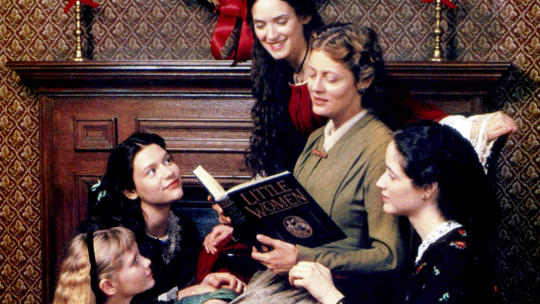


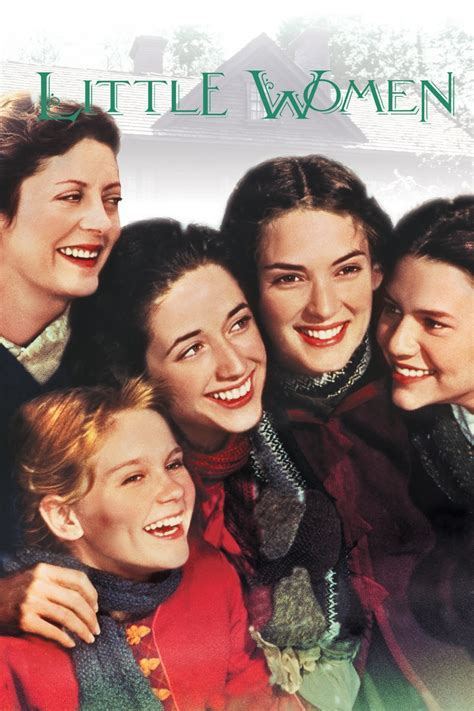
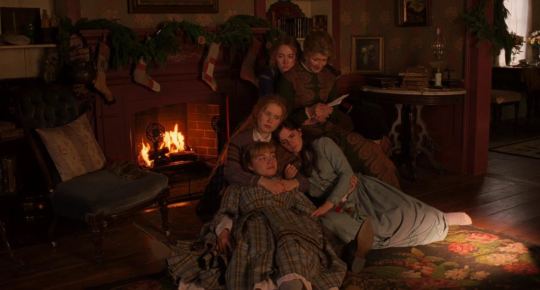

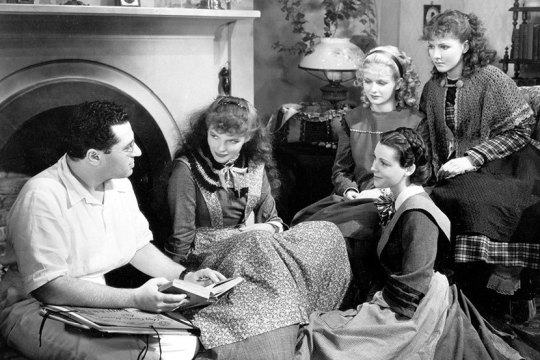
“If the main character is a girl, make sure she is married by the end. Or dead. Either way” - Little Women (2019)
https://open.spotify.com/episode/4LnfEZpgwbLWYKRg04LBgy?si=da0689e641094e86
Hello again listeners!
After a short hiatus, we are back! And we’re very excited to be bringing you a three part discussion on the cultural phenomenon that is Little Women. 👭🏼👭🏻
[two women Holding Hands emojis]
For our discussions, we’ll be focusing on two of the most beloved adaptations of the original 19th century novel: Gillian Armstrong’s 1994 film, starring Winona Ryder as Jo, and Greta Gerwig’s 2019 version starring Saoirse Ronan.
Through these three episodes we want to ask the question of whether ‘every generation deserves its own Little Women’, why the story remains so popular, and how its rich history of adaptation and analysis interact to inform our current understanding of the text.
Our main focus in this episode is how the 1994 and 2019 versions build, comment on, and reimagine the story of Little Women for their respective audiences, using not only the ‘original’ text, but also previous adaptations and interpretations of the text, and even Alcott’s own biography.
To listen, just head to the link in our bio, or find us wherever you find podcasts 🎧
[headphones emoji]
🍂🍁📚🎄🍃🌳❄️☃️📜✍️🪶
[falling autumn leaves emoji; leaf emoji; stack of books emoji; Christmas tree emoji; falling green leaves emoji; tree emoji; snowflake emoji; snowman emoji; scroll emoji; handwriting emoji; feather emoji]
📝 Shownotes: 📝
📼 Preread text (Rowan Ellis, https://youtu.be/SMFll3aIbmo)
Primary Sources:
📚 “Little Women” (1868, 1869) by Louisa May Alcott
🎞️ “Little Women” (1933) (dir. George Cukor, 📜 Sarah Y. Mason and Victor Heerman)
🎞️ “Little Women” (1949) (dir. Mervyn LeRoy, 📜 Andrew Solt, Sarah Y. Mason, Victor Heerman)
🎞️ “Little Women” (1994) (dir. Gillian Armstrong, 📜 Robin Swicord)
🎞️ “Little Women” (2019) (dir. + 📜 Greta Gerwig)
📺 “Little Women” (2017) (dir. Vanessa Caswill, 📜 Heidi Thomas) (Masterpiece: PBS)
Secondary Sources:
📰 “Life Magazine: Little Women: A Story for Every Generation” (Meredith Corp., 2020)
📚 “Adaptation and Appropriation” by Julie Sanders (2007) 📚 “Little Women and The Feminist Imagination” (Janice M. Alberghene, Beverly Lyon Clark) (1999) (Interview with Louise Chandler Moulton, 1883) 📜 “The Death of the Author” (“La mort de l'auteur”) (1967) by Roland Barthes 📜 ‘Everything depend[s] on the fashion of narration’: Women Writing Women Writers in Short Stories of the Fin-de-Siècle (Bryony Randall) 📜 “The New “Little Women” Makes Space For Jo’s Queerness (Shannon Keating) (https://www.buzzfeednews.com/article/shannonkeating/little-women-greta-gerwig-saoirse-ronan-jo-march-queer) 📼 “Greta Gerwig on Little Women: Reel Pieces with Annette Insdorf” (https://youtu.be/Z-4Ahn6lV-Y) 📼 “Little Women: Laurie & Jo” (https://youtu.be/osdVRusNGgg) 🎞️ “G.I. Jane” (1997) (dir. Ridley Scott, 📜 David Twohy, Danielle Alexandra) Them article - add (Lili)
📱Social Media Handles📱:
IG: https://www.instagram.com/liliannapod/ Twitter: https://twitter.com/liliannapod Tumblr: https://www.tumblr.com/blog/liliannasprereadmediathek
🎹 Intro Music 🎹: "Wall" by Jahzaar, licenced under Attribution-ShareAlike 4.0 International (CC BY-SA 4.0)
🎹 Outro Music 🎹: “Waterbeat” by DJ Lengua, licenced under Attribution 3.0 Unported (CC BY 3.0)
🎹 Transition Music 🎹:
“Pencil” by zakkolar - Pixabay “Fireplace Fire Crackling - Loop” by SoundsForYou - Pixabay “Sleigh Bells fast” by jcdecha - Pixabay “Tambourine christmas sound effect 25” by beetpro - Pixabay “Footsteps in the snow, шаги в парке,” by SSPsurvival - Pixabay
#LittleWomen #LouisaMayAlcott #JoMarch #AmyMarch #BethMarch #MegMarch #Laurie #GretaGerwig #SaoirseRonan #EmmaWatson #FlorencePugh #ElizaScanlen #LauraDern #TimothéeChalamet #BobOdenkirk #MerylStreep #GillianArmstrong #SusanSarandon #WinonaRyder #KirstenDunst #ClaireDanes #ChristianBale #AdaptationTheory #MoviePodcast #podcast #queer #FeministPodcast #QueerPodcast #LiliAnnasPrereadMediathek #LiliAnnaPod
5 notes
·
View notes
Text
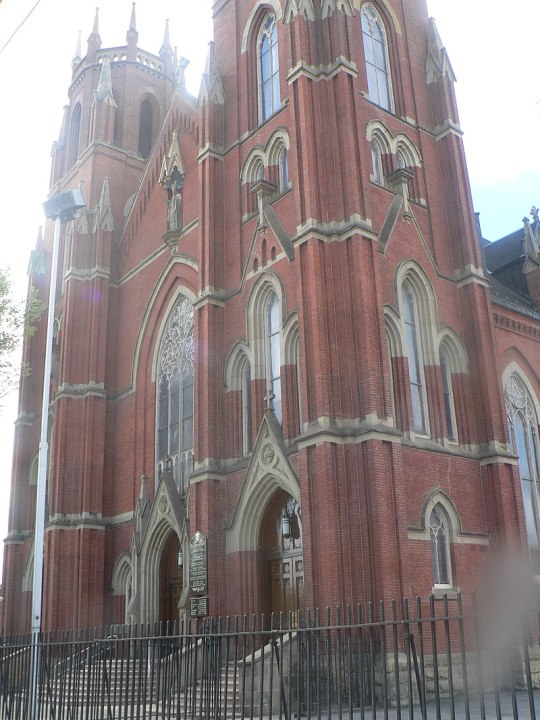
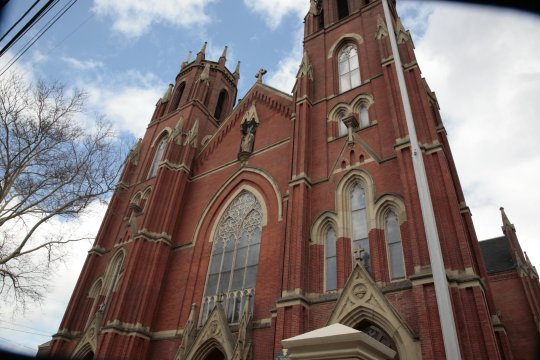


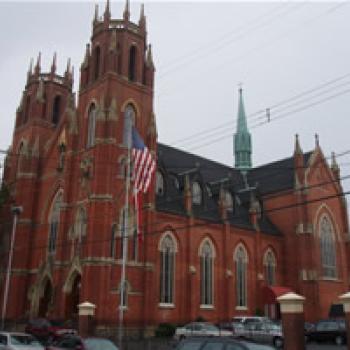
St. Stanislaus Church (Shrine Church of St. Stanislaus)
3649 East 65th Street
Cleveland, OH 44105
St. Stanislaus Church, officially the Shrine Church of St. Stanislaus, is the home of a Catholic parish within the Diocese of Cleveland. St. Stanislaus is one of the major historic centers of Polish life in Cleveland, Ohio, especially for Poles with roots in Warsaw and surrounding areas, and is often called the mother church for Cleveland's Polish population. The shrine is located at the intersection of Forman Ave. and East 65th St., in a part of the South Broadway neighborhood previously known as Warszawa; today the area is known as Slavic Village.
The year 1868 marks the beginning of the Catholic Polish immigration to Cleveland. It was then that a few families of Poles settled in the "Forest City." By the end of 1873 their number so increased that Bishop Richard Gilmour found it necessary to organize them into a separate congregation. As they were too poor, and too few in number, to build their own church, Gilmour gave them the use of St. Mary's on the Flats. Catholic Poles of Cleveland were the last to occupy St. Mary's on the Flats, the first Catholic church building in Cleveland, from 1872 to 1879, before organizing as the St. Stanislaus congregation.
The Congregation was founded 1873 — about 25 years after the Diocese of Cleveland was erected by Pope Pius IX and about eight years before obtaining the current property. For the pastoral care of Polish language speakers, Gilmour commissioned Father Victor Zareczny to look after their spiritual interests, which he did from December, 1873, until October, 1877, when Father John A. Marschal was appointed the first resident pastor for Poles. This position he held until January, 1879, when Father Wolfgang Janietz succeeded Father Marschal. In August, 1881, Janietz secured a site at the north-east corner of the intersection of Forman St. and Tod (East 65th) St., in the southern part of Cleveland, where most of the Poles had settled, near to the Cleveland Rolling Mills, which was located near present-day Jones Rd. and Broadway Ave., where many of them had found employment. The property cost $3,000, and comprised thirteen lots, forming a square plat of land, with ample room for all the parish buildings. On the east side of these lots Janietz had a plain frame, 35 ft. by 86 ft., building erected. The upper story served as a temporary church, and the lower story as a school. The building cost $4,600. It was dedicated to St. Stanislaus of Szczepanów by Gilmour, on Sunday, November 13, 1881.
Anton Francis Kolaszewski received Holy Orders on July 1, 1883, from Gilmour. His first assignment as a priest, a few weeks after his ordination, was as the first resident pastor of St. Stanislaus Church, replacing Janietz. Kolaszewski had the frame church enlarged in the following year, at an outlay of $1,500, to accommodate his rapidly increasing parish. In August, 1886, the foundation for the present church, 85 ft. by 200 ft., was begun, and the church enclosed during the following year. Locally made warm red brick and dressed stone were used in its construction. Steadily it neared completion, until it was ready for dedication on Sunday, November 15, 1891. Boff, administrator of the diocese, performed the dedication ceremony. It has two spires, each 232 ft. in height, and its architecture is pure Gothic. It cost nearly $150,000, inclusive of altars, pews and statuary. Others wrote it cost $250,000. A parish school was opened simultaneously with the original church, and had been under the care of Sisters of St. Francis. The attendance, in 1903, was about 1,000 pupils.
A tornado on April 21, 1909, destroyed the twin spires at the front of the church. They were rebuilt within the year. Saint Stanislaus’ original height was 232 ft. but currently is 122 ft. In 1962, St. Stanislaus built a new parish social center and gym complex across the street. In 1968, Cleveland Central Catholic High School was established at St. Stanislaus Parish. Cleveland Central Catholic and St. Stanislaus School have Masses in the church. In 1969 Cardinal Karol Wojtyła (the future Pope John Paul II) visited the parish. On June 22, 1976, it was added to the National Register of Historic Places. The building itself, listed as St. Stanislaus Church, and the neighborhood, listed as Warszawa Neighborhood District, are both on the National Register of Historic Places. The church and school buildings are listed together as a Cleveland Designated Landmark. In 2004, St. Stanislaus completed a $1.4 million renovation of the church's interior and on 8 May of that year, it was re-dedicated as the Shrine Church of St. Stanislaus. In 2008, the administration of the parish was transferred from the care of Sacred Heart Province of the Order to Assumption Province, which is the Polish-American province of the Order. In April 2007, a group of parishioners traveled to Kraków and brought back an icon, written in tempera by Polish iconographer Mado Anna Kucharska, depicting St. Stanislaus with John Paul II. The Main and Side altars of The Shrine Church of St. Stanislaus underwent renovation in February 2011. In 2011, after 105 years of service, the Franciscan order left the Shrine Church of St. Stanislaus.
0 notes
Text

King Ludwig I of Bavaria with his Family, Jointly Examining the Painting ‘The Arrival of King Otto of Greece into Napflio"
Artist: Peter von Hess (German, 1792-1871)
Date: 1835
Ludwig I or Louis I (25 August 1786 – 29 February 1868) was King of Bavaria from 1825 until the 1848 revolutions in the German states. When he was crown prince, he was involved in the Napoleonic Wars. As king, he encouraged Bavaria's industrialization, initiating the Ludwig Canal between the rivers Main and the Danube. In 1835, the first German railway was constructed in his domain, between the cities of Fürth and Nuremberg, with his Bavaria joining the Zollverein economic union in 1834. After the July Revolution of 1830 in France, Ludwig's previous liberal policy became increasingly repressive; in 1844, Ludwig was confronted during the Beer riots in Bavaria. During the revolutions of 1848 the king faced increasing protests and demonstrations by students and the middle classes. On 20 March 1848, he abdicated in favour of his eldest son, Maximilian.
Ludwig lived for another twenty years after his abdication and remained influential. An admirer of ancient Greece and the Italian Renaissance, Ludwig patronized the arts and commissioned several neoclassical buildings, especially in Munich. He was an avid collector of arts, amassing paintings from the Early German and Early Dutch periods as well as Graeco-Roman sculptures.
All living legitimate agnatic members of the House of Wittelsbach descend from him.
#portrait#peter von hass#king ludwig i of bavaria#royal family#bavarian family#19th century bavaria#family#artwork#drapery#german painter#king of bavaria#bavarian royal family#19th century art
1 note
·
View note
Text

James “Jim” Hill (July 25, 1846 - June 12, 1903) was born enslaved in Marshall County, Mississippi. He was a leader of the Reconstruction Era Republican Party, chairman of the Republican state executive committee, and national committeeman of the Republican Party for Mississippi for many years.
James W. Hill, the owner of the plantation where he was born, was one of the county’s most prominent citizens. It is suspected that he was his son. He was taught to read and write by his owner’s two daughters. He continued his education as a youth and apprenticed as a machinist at the railroad shops in Holly Springs. He rose to the rank of first-class mechanic.
In 1868 he was elected to the Mississippi State Legislature, representing Marshall County. He was elected secretary of state of Mississippi (1874-78). He was the last 19th-century African American to be elected to statewide office in Mississippi.
He was appointed district internal revenue collector by President Rutherford B. Hayes. He was named postmaster at Vicksburg in 1886. He was the only Mississippi postmaster to ever serve a full four-year term without being confirmed by the Senate.
He was a candidate for land registrar again, but newly elected President Benjamin Harrison did not support his reappointment. He maintained his position as chair of the Republican State executive committee, a post he held (1884-1903).
He never married. He was a member of the African Methodist Church and deputy grand master of the Black Masons in Mississippi.
In 1912, an elementary school for African American children in West Jackson was founded and named in his honor. The current Jim Hill High School was constructed in 1966 on Fortune Street in Jackson. #africanhistory365 #africanexcellence
1 note
·
View note
Text
MEXICO CITY, MEXICO STREET ART: LEGENDARY MUSICAL ICONS by KOKA
Ludwig van Beethoven (baptised 17 December 1770 – 26 March 1827) was a German composer and pianist. Wolfgang Amadeus Mozart (27 January 1756 – 5 December 1791) was a prolific and influential composer of the Classical period. José Juventino Policarpo Rosas Cadenas (25 January 1868 – 9 July 1894) was a Mexican composer and violinist. Adelina Patti (19 February 1843 – 27 September 1919) was an…

View On WordPress
#art#cdmx#Graffiti#life#mexico#mexico city#murals#nomad#photography#Street Art#TOKIDOKI Nomad blog#TOKIDOKI Nomad travel blog#Travel#urban art#World Travel
0 notes